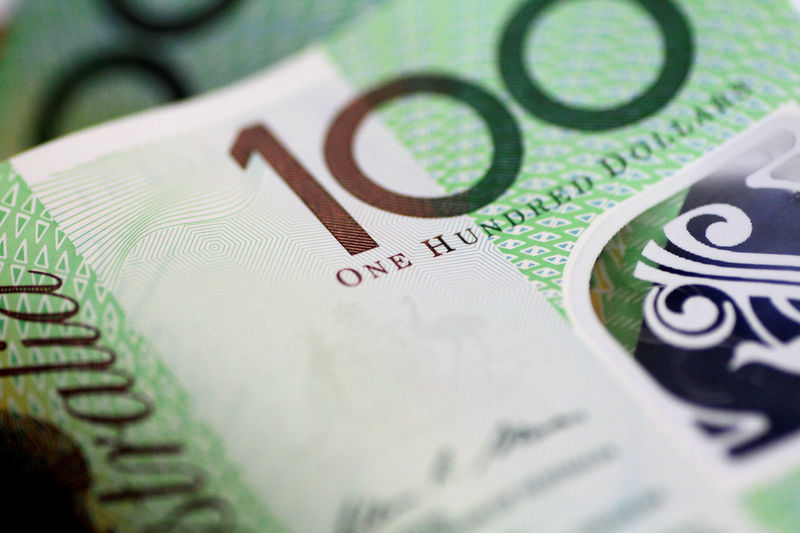By Wayne Cole
SYDNEY, Feb 8 (Reuters) - The Australian and New Zealand dollars looked set to end a rough week with punishing losses on Friday as markets moved aggressively to price in the risk of a cut in interest rates, driving bond yields to multi-year lows.
The Reserve Bank of Australia (RBA) underlined its dovish tilt by downgrading forecasts for economic growth and inflation, while warning that a slide in housing prices threatened to throttle consumer spending. was also sapped when U.S. President Donald Trump said he did not plan to meet with Chinese President Xi Jinping before a March 1 deadline on a trade deal, dampening hopes of an end to the tariff war. the negative news piled up, the Aussie AUD=D3 peeled off to $0.7065, a loss of 2.5 percent for the week so far - the sharpest such decline since late 2016.
The trouble began on Wednesday when RBA Governor Philip Lowe abandoned a long-held tightening bias and said a cut might be just as likely as a hike should unemployment turn higher and inflation stay subdued. sombre mood permeated the bank's quarterly outlook on the economy, released on Friday, with downgrades everywhere.
"The RBA's statement is littered with uncertainty and downside risks, opting to highlight six key downside risks and just one upside, suggesting little confidence in its key forecasts," said Su-Lin Ong, head of Australian and New Zealand fixed income strategy at RBC Capital Markets.
"It does not remain our base case view, but we would not fight market pricing for cuts," she added. "The risk is that yields move lower and we see further outperformance of Aussie fixed income."
The shift has already unleashed a bonanza for bond bulls.
Yields on three-year government debt AU3YT=RR dived to their lowest since October 2016 and were last off 14 basis points for the week at 1.59 percent.
Ten-year yields AU10YT=RR had sunk 13 basis points for the week to 2.079 percent, with futures YTCc1 surging to 97.9200.
The futures market 0#YIB: rushed to fully price in a quarter-point cut in the 1.5 percent cash rate by December. At the start of the week, the betting had been only 50-50.
Investors were even flirting with the probability of a second easing next year, knowing that the RBA has never moved just once on rates. The RBA eased twice in 2016, twice in 2015 and twice in 2013.
EYES TURN TO RBNZ
Speculative selling has also engulfed the New Zealand dollar NZD=D3 , which slid to a fresh two-week low of $0.6730 on Friday, down a steep 2.3 percent on the week and its largest percentage loss since October.
It took a bad turn on Thursday when employment data disappointed, stirring speculation the Reserve Bank of New Zealand might sound more amenable to a rate cut at its policy meeting on Feb. 13. balance of developments since the RBNZ's November meeting is negative and argues for a dovish shift in the commentary and perhaps rate forecast," said Westpac analyst Imre Speizer.
"Markets have responded by shifting rate pricing from a 50 percent chance to a 70 percent chance of a rate cut in 2019."
All of which lit a fire under bonds. Yields on two-year government debt NZ2YT=RR were down almost 10 basis points for the week to the lowest in modern history at 1.62 percent.
That was sharpest weekly drop since August and took yields well under the 1.75 percent cash rate.
Overnight indexed swaps, a guide to market expectations on the cash rate, had also fallen to 1.60 percent NZDOIS for one-year ahead.
(Editing by Richard Borsuk)
